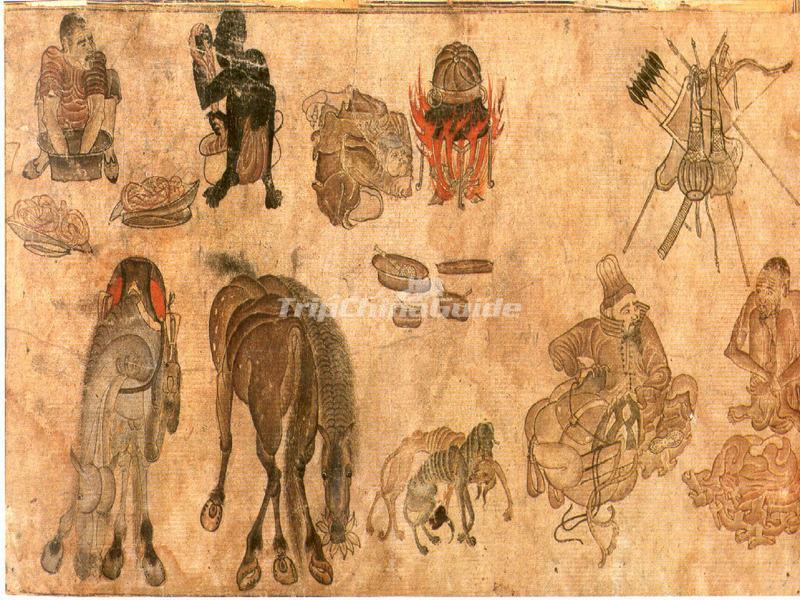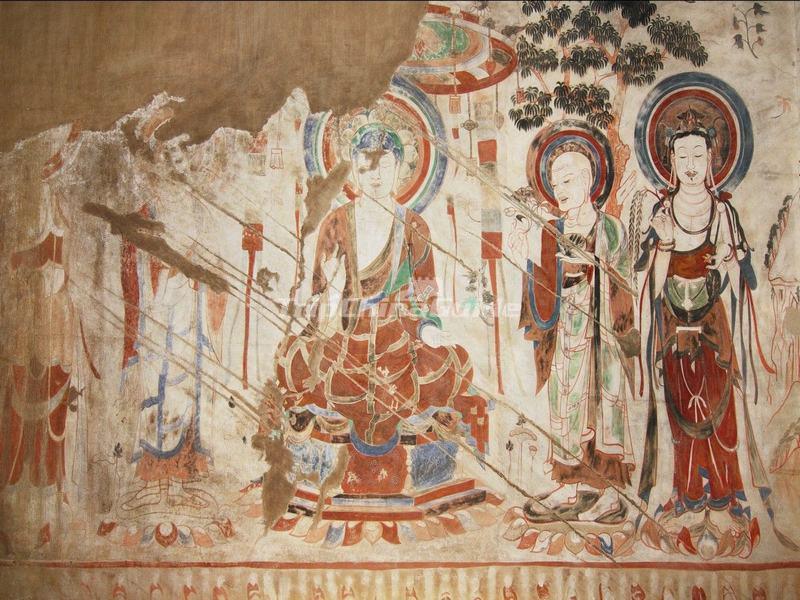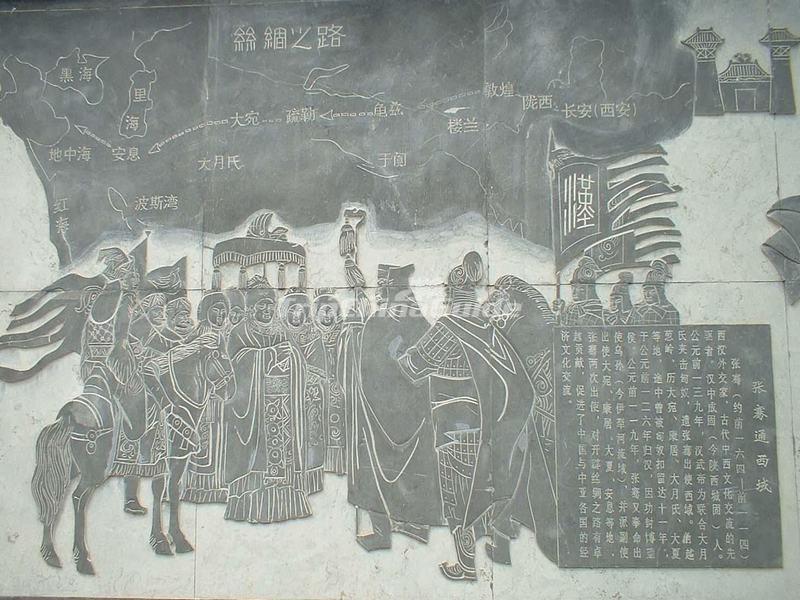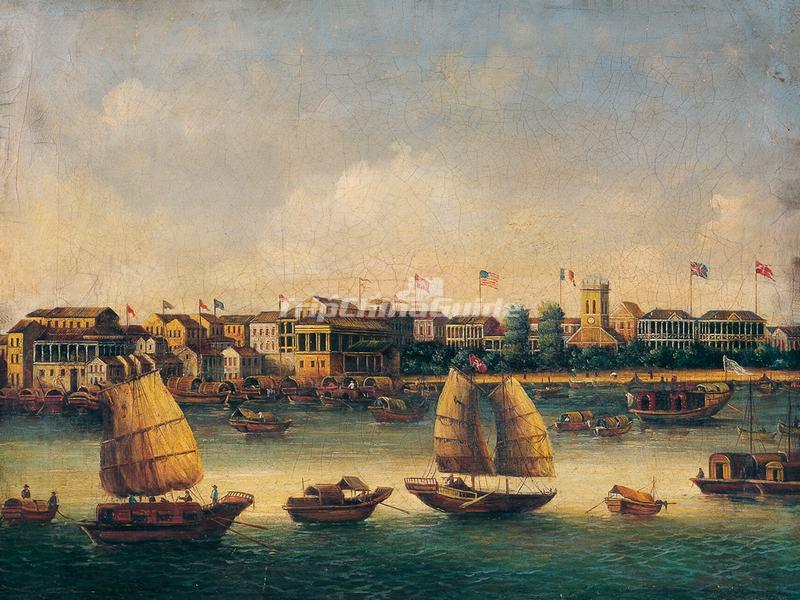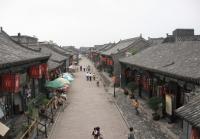China Silk Road Facts
Chinese historical Silk Road is divided into the Land Silk Road and the Maritime Silk Road. Originated in the Western Han Dynasty (202 BC—8 AD), which marked by Zhang Qian first visited to the Western Regions in 138 BC.
Land Silk Road
The Land Silk Road is the most well-known trading route of ancient Chinese civilization. It is the popular name given to the system of caravan trade routes that lasted for many centuries and linked Eastern and Western civilization between the Ancient and Middle Ages. Because silk comprised a large proportion of trade along this road, in 1877, it was named 'the Silk Road' by Ferdinand von Richthofen, an eminent German geographer.The main route of the Land Silk Road traveled through China along the Gan-Su corridor, then through the Tarima basin, and the highlands of the Pamir and Tian-Shan ranges, into Central Asia, Afghanistan, Iran, the Eastern shores of the Mediterranean Sea, and still further along to the trading centers of the Near East, Countries of the Silk Road, and Europe.
The Great Silk Road first operated as a route between China and the capital of the Roman Empire in the 2nd century BC. It was approximately 7000 kilometers long. The most valuable commodity imported from China was silk, which is an obvious explanation why this entire transcontinental trade route was named The Silk Road.
Origins of the Land Silk Road
Originally, the Chinese trade silk internally, within the empire. Caravans from the empire's interior would carry silk to the western edges of the region. Often small Central Asian tribes would attack these caravans hoping to capture the traders' valuable commodities. As a result, the Han Dynasty extended its military defenses further into Central Asia from 135 to 90 BC in order to protect these caravans.
Zhang Qian, the first known Chinese traveler to make contact with the Central Asian tribes, later came up with the idea to expand the silk trade to include these lesser tribes and therefore forge alliances with these Central Asian nomads. Because of this idea, the Silk Road was born.
The route grew with the rise of the Roman Empire because the Chinese initially gave silk to the Roman-Asian governments as gifts.
Decline of the Land Silk Road
By 760 AD, during the Tang Dynasty (618-907), trade along the Silk Road had declined. It revived tremendously under the Sung Dynasty in the eleventh and twelfth centuries when China became largely dependent on its silk trade. In addition, trade to Central and Western Asia as well as Europe recovered for a period of time from 1276-1368 under the Yuan Dynasty when the Mongols controlled China. The Chinese traded silk for medicines, perfumes, and slaves in addition to precious stones. As overland trade became increasingly dangerous, and overseas trade became more popular, trade along the Silk Road declined. While the Chinese did maintain a silk-fur trade with the Russians north of the original Silk Route, by the end of the fourteenth century, trade and travel along the road had decreased.
Historical Significance of the Land Silk Road
The Great Silk Road is, in fact, a network of routes which played a highly significant role in the lives of many people in Eurasia. It was an important artery in the Ancient and middle Ages, a source of merchandise and information, and the starting point of many conflicts and wars. Along this route sprang into existence, and fell into decline, many nations and cultures, great powers, trade centers, and capitals of many of the former empires of the world. Trade centers and capitals of these empires appeared, flourished and gained fame, and then decayed and declined.
The Great Silk Road is one of the most significant achievements in the history of world civilization. The widespread network of caravan routes crossed Europe and Asia from China to the Mediterranean coast and in ancient times served as an important means of business relations and cultural exchange between East and West. The longest part of the Silk Road lies across the territory of Central Asia and Kazakhstan.
Land Silk Road‘s Functions
This Silk Road is a historically important international trade route between China and the Mediterranean, which had played a significant role in History. It had served the following roles:
Commodity Exchanges - Caravan shipped out silk, porcelain, iron, gold, silver, mirrors and other luxury products from China; Grapes, walnuts, carrots, peppers, strictosidine, spinach, cucumber, pomegranate and other species was introduced to China.
Cultural Exchange - China's papermaking technique and typography spread around the world; Wells drainage technology and drilling wells technology transfer to the West by the Chinese.
Religious Exchanges - Buddhism, Zoroastrianism, Manichaeism and Nestorianism came to China along with the Silk Road, made a lot of people's beliefs, and along the Silk Road branch, spread to Korea, Japan and other Asian countries.
Landscape along the Silk Road
The scenery and sights along the Silk Road are spectacular and intriguing. There are well-known Mogao Caves (Mogao Grottoes) in Dunhuang, the bustling Sunday Bazaar in Kashgar and exotic customs in Xinjiang Uygur Autonomous Region and so on.
Maritime Silk Road
The maritime Silk Road, like its overland counterpart, had its origins during the Han Dynasty (202 BC-220 AD). Although vast seas separate the four corners of the Earth, with advances in shipbuilding and navigational technologies, maritime transport came to provide unprecedented access to the most distant destinations.It is known that the bulk of the raw and processed silk transported along the overland Silk Road during the Han Dynasty was produced primarily along China's southern coast and in the coastal Wu, Wei, Qi, and Lu regions (present-day Shandong Province). Since ancient times, these areas have been thriving centers of shipbuilding as well as silk production. They were thus able to supply both commodities for export and the means to transport them across the sea. It was this combination that provided the social and material conditions necessary for the development of maritime trade during the Han Dynasty.
Origins of the Maritime Silk Road
The maritime routes opened by Emperor Han Wudi (reigned 140-87 BC) provided access to the Roman Empire via India, marking the first oceanic route as well as the earliest marine trading route in the world. This enabled China to actively seek out overseas markets and establish foreign trade relations, and laid the foundation for the development of the maritime Silk Road.
Han Shu Record (also known as The History of the Han Dynasty) kept the first complete vivid record on China's boats sailing into the Indian Ocean from the South Sea via the Malacca Strait in Southeast Asian waters. Han ships would leave from Xuwen in South China's Guangdong Province, or Hepu in South China's Guangxi Zhuang Autonomous Region, and via the South Sea, would arrive in India and Sri Lanka -- a transfer station, where pearls, colored glazes, and other exotic things could be bought. Chinese silk was transported to Rome hereafter. Such was the marine Silk Road.
Historical Evolution of the Maritime Silk Road
In 166 of the Han Dynasty, the Roman Emperor sent envoys to China, presenting various such gifts as ivory and hawksbill turtles to the imperial royal court, which marked the earliest friendly relations between China and European countries. A direct route from the East to the West was therefore opened up.
During the Tang Dynasty (618-907 AD), Chinese ships set sail from Guangzhou, bound across the South China Sea, thus pioneering the most important routes of the maritime Silk Road. In addition to transporting silk, the South China Sea routes stimulated both material and cultural exchange. Countries throughout Southeast Asia, South Asia, West Asia, and even Europe dispatched emissaries to China via the new maritime routes to establish diplomatic relations, purchase silk, and engage of trade of all sorts. Silk, as the principal maritime trade commodity, flowed in a steady stream from China to other countries.
Profits from the maritime trade were one of the Chinese government's major sources of revenue during this time. The Tang, Song (960-1279), and Yuan (1279-1368) Dynasties all appointed special Commissions of Maritime Affairs at coastal cities including Guangzhou (Canton), Mingzhou (present-day Ningbo), and Quanzhou. These offices were responsible for overseeing maritime trade and providing logistic support and preferential treatment for foreign merchants in China. The maritime Silk Road thus became a conduit for promoting friendly relations and linking East and West.
Function of Maritime Silk Road
Maritime Silk Road is maritime traffic routes between China and the rest of the world. A large number of Chinese porcelain, silk, etc. exported through Land Silk Road in Central Asia, West Asia, Africa, and European countries, but also continuously sold to countries around the world through the Maritime Silk Road. Meanwhile, through the sea transport routes, Western medicine are also entered China.








